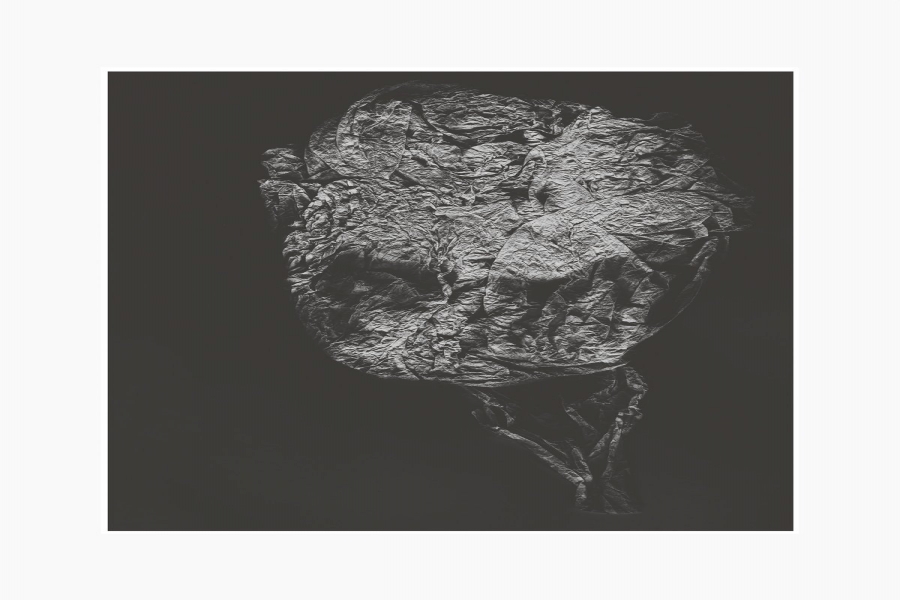Composer/performer/improviser David Toop’s latest release traces the seam between sound and music, paying attention to the hidden sounds that surround us and turning silence inside out.
“In a lot of ways I’ve come to dislike music,” David Toop told The Wire in 2003. “I love sound, I love silence, but music as a whole I don’t like anymore.” You might assume that would have troubled him, given that Toop, then 54, had been deeply involved with music for most of his life, in virtually every role imaginable: performer, improviser, composer, critic, theorist, archivist, curator, and label owner. But if it represented any sort of crisis for him—six years before, burnout and “indifference to contemporary music” had led Toop to hang up his hat as a music journalist—it didn’t hold back his output. Since making the statement, Toop has continued to perform and lecture, released a half-dozen albums, and written two books, including the recently published Into the Maelstrom: Music, Improvisation, and the Dream of Freedom.
But Toop’s turn away from music, that complicated category of organized sound, has been crucial in one very important aspect: It has allowed him to ask probing questions about the nature of listening. Those questions come to a head on Entities Inertias Faint Beings, his first studio album since 2007’s Sound Body. Offering a vibrant array of rustle and hum, the new album traces the seam between sound and music, between the intentional and the incidental, between expression and mute abstraction. A partial index of its sounds would include the whine of rubbed wineglass rims; shortwave radios on the fritz; the electric buzz of the forest canopy at night; the languid click of fingernails across guitar strings; the whirr and flap of a 16mm film projector’s take-up reel. It is an album about paying attention to the hidden sounds that surround us, about turning silence inside out. And it is an album about using sound to find one's own bearings.
Entities Inertias Faint Beings got its start as an autobiography—or, more precisely, it is the result of what turned out to be an abortive case of writer’s block. Its genesis lies in three periods of solitude: first a stay on Tamborine Mountain in subtropical Queensland, Australia (“so silent at night that I listened to recorded music—Japanese gagaku, Buddhist ritual from Bhutan, Korean Confucian music—as if drifting into cavernous black space,” Toop writes in his introduction to the album), and then on Queensland’s Gold Coast, where cicadas harmonized with helicopters. Back in Cornwall, trying and failing to write his life’s story, he began sifting through several years' worth of personal recordings he had stored on his computer: small, percussive thunks; filament-like drones; the crinkling of paper. Shuffling, layering, and arranging—not so much composing as feeling his way through the material, as if improvising—he added new sounds to the mix, like a quiet passage of acoustic guitar from one of his daily practice sessions, and a hydrophone recording from his garden pond. And in London, he fleshed out the pieces with the help of musician friends. The improvising saxophonist John Butcher lends trilling, bird-like sounds to two tracks; Rie Nakajima's battery-powered motorized objects rattle and whirr, suggesting insect colonies in upheaval.
The overall result—thematically, anyway—is something like one of W.G. Sebald’s literary peregrinations: a palimpsest of place, memory, and accident, although its precise route is unknown to all but its creator. There is little to tell us what any of these clicks and pings might actually be. Several of the album’s track titles suggest cryptic headings scrawled on notecards in dusty filing cabinets: “dry keys echo in the dark and humid early hours”; “pieces of wood and iron, phials of odours”; “sea slug.” They function as indices of possible experiences, and if they explain little—do the bassy gurgles of “sea slug” really come from a gastropod mollusk?—they offer unusual and inviting travelogues consisting of little more than white noise and feral throb.
But Toop can’t quite resist sneaking music—that most elegantly ordered aspect of organized noise—back into the equation. Again and again, understated wisps of melody, harmony, and rhythm surface briefly and disappear just as quickly, sending out ripples that supercharge every corner of this lovely, engrossing album. In the album’s centerpiece, “ancestral beings, sightless by their own dust,” Sylvia Hallett’s sarangi, a bowed string instrument from Hindustani classical music, weaves an eerie, mournful air over slow, methodical pulses. Then, at the track’s end, a jungle’s worth of growling, chirping, buzzing sounds swells and is swallowed in turn by the steady gush of a tropical rainstorm. Toop has compared his compositional processes to traditional Japanese stone gardens—one track, “setting stones,” quotes a thousand-year-old passage on the subject—and at its most engrossing, Entities captures the uncanny qualities of inanimate objects in conversation with one another. It is a way of suggesting that the music exists independently even of its creator; it is a product of the act of listening itself. By the act of focusing our ears, we bring it to life—and vice versa.








